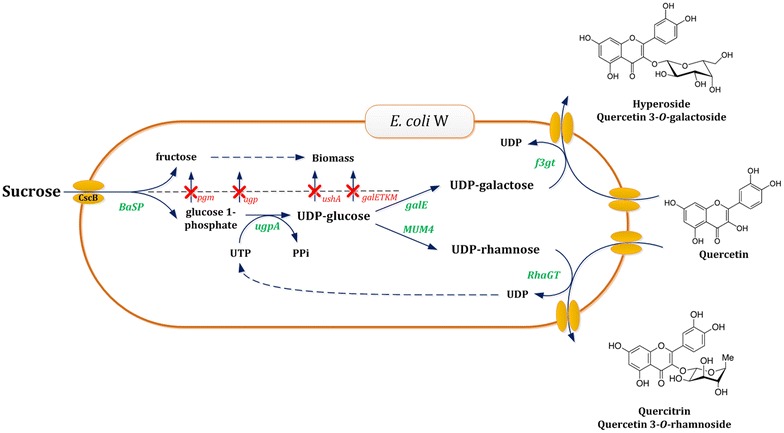Fig. 1.

Transformation of E. coli W into a sucrose-based galactosylation and rhamnosylation platform. The metabolic engineering strategy applied makes use of several gene deletions (indicated in red) and overexpressions of genes (indicated in green). The rational of a split metabolism is applied, whereby sucrose is divided by sucrose phosphorylase (BaSP) in fructose to be used for growth and a glucose 1-phosphate as activated precursor for UDP-glucose. The latter is a universal pivot molecule for the formation of UDP-galactose and UDP-rhamnose, interconversions catalyzed by the enzymes GalE and MUM4, respectively. To ensure growth-coupled production, various genes, involved in the metabolization of these UDP-sugars and their precursors, were knocked out (shown in red). The production of the bioactive quercetin glycosides hyperoside and quercitrin was chosen to evaluate the versatility of the engineered production platform. Finally, the introduction of either the glycosyltransferase F3GT or RhaGT ensures efficient galactosylation or rhamnosylation, respectively
